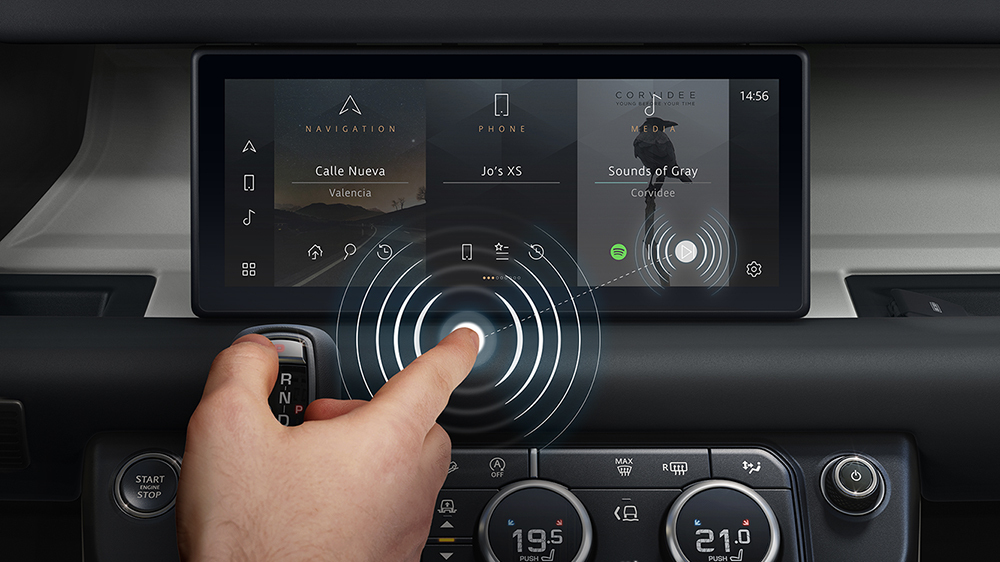Please check the information entered!
- Please check the information entered
A log-in email has been sent to your email address
Forgot password? Reset password
Jaguar Land Rover (JLR) and the University of Cambridge are collaborating on the development of a new contactless touchscreen technology, which is designed to promote safer driving and reduce the spread of germs, bacteria and viruses in a post-COVID world.
The patented technology, known as ‘predictive touch’, uses sensors and Artificial Intelligence (AI) to sense where the driver is aiming for on the touchscreen e.g. entertainment controls, satellite navigation or temperature settings.
Before the driver has actually touched the screen the technology carries out the intended command. The developers say lab-tests and on-road trials have shown the technology to reduce a driver’s touchscreen interaction effort and time by as much as 50%. In addition, by eliminating the need to actually touch the screen, the system will help reduce the potential spread of infections between people who use the technology.
Using radio frequency-based or vision-based sensors, the gesture tracker incorporated in the system identifies where a driver intends to touch early on in the pointing task, speeding up the overall interaction.
While the predictive touch technology has been developed primarily with vehicle applications in mind — it already features in the Destination Zero vision of the Jaguar Land Rover — its possibilities are endless. For example, it could lead to contactless ATMs, railway ticket machines, airport check-ins, supermarket self-serve checkouts and many other uses. In a post-COVID world where social distancing and regular handwashing will still be commonplace, such breakthroughs could play a huge role in limiting the spread of infections.
Speaking about the predictive touch technology, Lee Skrypchuk, human-machine interface technical specialist, at Jaguar Land Rover, said: “Predictive touch technology eliminates the need to touch an interactive display and could, therefore, reduce the risk of spreading bacteria or viruses on surfaces.
“The technology also offers us the chance to make vehicles safer by reducing the cognitive load on drivers and increasing the amount of time they can spend focused on the road ahead”.
You can see the technology in action in this video from Cambridge University:
What do you think? Will contactless touchscreens be a feature in most vehicles going forward, or will consumers still prefer to physically touch a screen? Tweet us @PolytecNews

Image credit: Jaguar Land Rover